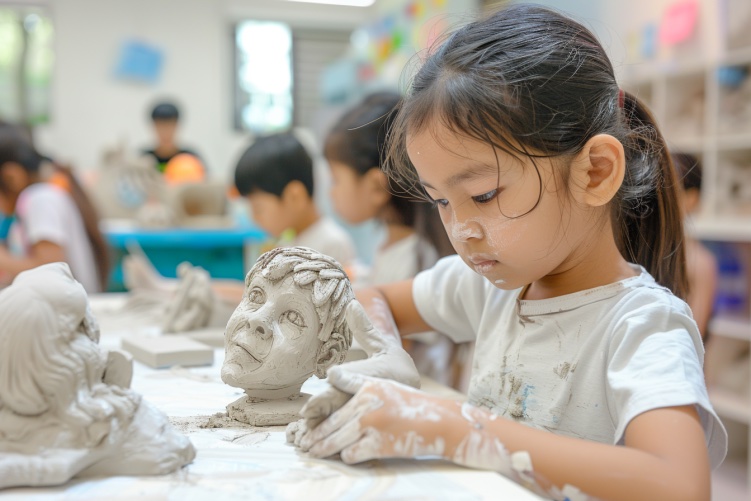Cultivating Creativity Through Clay
Dive into a child’s playroom, and you might find a treasure trove of toys and tools designed to inspire and educate. Among these, one of the most profound yet understated is clay. This malleable material does more than just pass the time; it molds minds. Engaging with clay isn’t just fun—it’s a pivotal development tool that enhances fine motor skills, sparks creativity, and hones concentration.
The Touch of Texture: Boosting Fine Motor Skills
Imagine a child, their focus intent on a soft, pliable piece of clay. As they pinch, roll, and sculpt, their small hands perform delicate dances of dexterity. Each movement may seem simple, yet it’s intricately building the child’s fine motor skills. These skills are crucial. They lay the groundwork for later detailed activities, such as writing and tying shoelaces. Clay challenges children to manipulate materials with precision, transforming their fluttering little fingers into instruments of control and coordination.
Shaping Imaginations: Enhancing Creativity
Now, consider the boundless realms of imagination that clay unlocks. When children sculpt with clay, they’re not just crafting shapes; they’re conjuring worlds. This form of play does more than entertain. It invites the young sculptor to make decisions, solve problems, and express themselves. Each piece of artwork tells a story, reflects a mood, or captures a dream. In this creative process, children learn to think outside the proverbial box, developing a mindset that thrives on possibilities rather than constraints.
A Focus that Forms: Improving Concentration
Engagement with clay can also be a meditation of sorts for the young mind. The act of focusing on a tactile task requires a level of concentration that is rare in the hustle of daily distractions. As children knead and shape their visions into tangible forms, they are also training their minds to focus deeply. This improved concentration can translate into better performance at school, with increased ability to stay on task during complex assignments.
Beyond the Clay: Lasting Impacts
The benefits of working with clay reach beyond the immediate joy and engagement it provides. This tactile medium can play a significant role in a child’s emotional and cognitive development. Through the simple act of creating with clay, children develop a sense of achievement and self-esteem. They learn to appreciate the process of making something with their hands, which can be a calming and therapeutic experience. Furthermore, the flexibility of clay—its ability to transform and adapt—mirrors the resilience we hope to instill in our young ones.
Crafting the Future
In a world where digital screens often dominate playtime, clay brings a tactile counterbalance that is essential for balanced development. It encourages children to reconnect with the physical world, fostering a sense of presence that’s becoming increasingly rare. As parents and educators, providing opportunities for children to work with clay can be a pivotal choice in their developmental journey. It’s about offering a tool that not only entertains but educates and enlightens.
Conclusion: Molding Young Minds
As we look towards nurturing the next generation, let’s not underestimate the power of simple materials like clay. In its essence, clay is a foundation for building developmental skills that children will carry throughout their lives. By encouraging our young ones to delve into the depths of clay sculpture through clay sculpture classes for kids, we are not just keeping them occupied; we are helping them build their futures, one sculpture at a time. Let’s give them the clay, and watch them shape their tomorrows.


